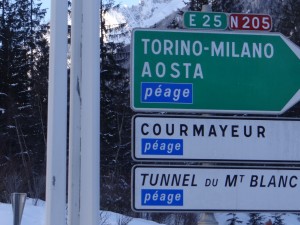Driving To Italy
-
November 19, 2016
Have You Considered Driving To Italy This Winter?
There are many ways to get to the Alps for your ski holiday, but one which is commonly overlooked is driving your own vehicle. The most obvious is flying, but that can be expensive, even with the advent of so-called budget airlines. Other alternatives are by coach or even rail – maybe even hitchhiking if you’re feeling adventurous but we really don’t recommend it!
If you choose to drive you can expect to benefit from the following:
- Cut down on costs – especially for families
- Break up the journey – stop en route and extend your holiday
- Excellent (and quiet) French motorways mean swift, hassle-free journeys
- Avoid airport delays and cancelled flights
- No hassles with queuing for airport security either!
- No luggage restrictions or lost bags
- Easier to get between resorts if you fancy a change of scene one day
- Benefit of having a vehicle once in resort
- Save room to take home plenty of local produce!
How Much Does It Cost?
Assuming you go from Calais, and your destination is Aosta, the estimated cost is surprisingly cheap. Tolls will be in the region of €150 for the French motorways and the Mont Blanc Tunnel and you could expect fuel costs to be around €90, based on a family sized diesel car and with fuel at £1.15 a litre and you can even learn about white diesel near me if you need to refill your car. These are rough costs for a one way journey, so don’t forget to double this if you plan on coming home!
There’s also the cost of your ferry crossing and if you want to stop overnight anywhere and of course the fuel costs for getting to Dover.
What’s The Best Route?
This really depends on you, but there are several options through France. The quickest and most direct route is taking the A26 and A40 through France which is approximately 590 miles, and if you have an electric car for this trip, you can also get a Electric Vehicle Charger Installation so you can charge it before the trip. There are various other options available as well, but most are slightly longer. To look at these options and analyse different routes we recommend the Michelin website – have a look here.
How Long Will It Take?
Assuming no stops (and obeying all laws pertaining to speed restrictions!), it should take you around 9.5hrs. Of course, the reality is that you’ll want to stop at least once for comfort and refreshments. This of course does not take into account the ferry crossing or however long it takes you to reach Dover.
Is It Worth It?
This is a question only you can answer, but to summarise, we’d say have a look again at the benefits listed above. The real downside is that it can be a lengthy trip and as good as the French motorway network is, it can be a very boring drive!
Anything Else To Consider?
Don’t forget to check with your insurance company about taking your vehicle outside the UK, and it’s worth also checking on your breakdown arrangements – just in case!
For travelling on the continent you will need to have reflectors fitted to your headlights to change the direction of the dipped beam to prevent dazzling oncoming traffic. You will also need to display a ‘GB’ sticker on the back of the car.
Inside your car it is compulsory in France to have in the car a warning triangle, a high-vis vest for each passenger, a first aid kit. It’s also recommended to have a single-use breathaliser available in the car, although the law surrounding this has become unclear.
In Italy, it is also necessary to have snow chains in your car and be ready to use them as and when instructed.



Adam Crew